For hotel owners looking to grow their business, a robust revenue management strategy is of the utmost importance, helping to optimize business results. However, under the broader revenue management umbrella, many smaller strategies can help to facilitate growth. In this article, you’ll find 23 revenue management strategies that hotel industry employees can employ to achieve this ultimate objective.
Índice
- O que é gerenciamento de receita?
- 23 Estratégias de Gestão de Receitas
- 1. Analise o Mercado
- 2. Otimização de preços
- 3. Trabalhe de perto com outros departamentos
- 4. Estratégias de previsão
- 5. Adote a otimização de mecanismos de pesquisa
- 6. Use preços dinâmicos
- 7. Escolha a estratégia de preços certa
- 8. Incentivos para reservas diretas
- 9. Priorize o gerenciamento do canal de distribuição online
- 10. Concentre-se na otimização móvel
- 11. Trabalhe com um gerente de receita autônomo
- 12. IA em gestão de receitas
- 13. Estratégia de gestão de receitas auxiliares
- 14. Foco na retenção de clientes
- 15. Uso de dados omnicanal para gerenciamento de receitas
- 16. Previsão de demanda por quartos de hotel
- 17. Gerar Fidelidade do Cliente
- 18. Construir parcerias locais
- 19. Crie segmentos de mercado
- 20. Elabore um calendário de demanda
- 21. Implemente uma estratégia de upselling
- 22. Otimize seu uso de OTAs
- 23. Utilize ferramentas de automação
- O que é Total Revenue Management?
O que é gerenciamento de receita?
Gestão de receita é um conceito popular na indústria hoteleira e é usado para otimizar os resultados financeiros de um hotel ou resort, maximizando a receita. A definição aceita é vender o quarto de hotel certo, ao cliente certo, na hora certa, pelo preço certo, através do canal certo, com a melhor eficiência de custos.
Normalmente, exige que as empresas usem efetivamente dados e análises de desempenho para prever a demanda, estabelecer um modelo dinâmico de preços e maximizar a receita que a empresa gera.
Embora a gestão de receitas se aplique a outras indústrias, ela tem importância no indústria de hospitalidade because hotels deal with a perishable inventory, fixed costs, and varied levels of demand. According to STR Global, U.S. hotels saw a 1.8% increase in RevPAR in 2024, driven mainly by higher room rates. And CBRE’s 2025 Global Hotel Outlook predicts RevPAR will grow another 2% in 2025, again thanks to rising average daily rates (ADR).
Revenue management is important because it takes the guesswork out of key pricing decisions. You can read more extended information about revenue management in the article “O que é gerenciamento de receita?”.
23 Estratégias de Gestão de Receitas
Abaixo está uma lista de 23 estratégias revenue management que você pode usar para expandir seu negócio hoteleiro.
1. Analise o Mercado
Para implementar uma estratégia de gerenciamento de receita bem-sucedida, você deve entender claramente seu mercado, de onde vem a demanda e os fatores locais que podem afetar a demanda sazonal. Você também deve conhecer as necessidades, desejos e expectativas de seu público.
Além disso, você precisa fazer pesquisas sobre concorrentes para ver o que existe no mercado e tomar decisões estratégicas em relação a preços, descontos e publicidade tendo essa concorrência em mente. Lembre-se de que esta competição nem sempre é óbvia e nem sempre ocorre no mesmo local do seu hotel.
De acordo com Statista 2025 Travel & Tourism Report, global hotel demand is forecasted to grow 4.5% annually through 2030. Meanwhile, Revenue Matters’ Hotel Trends Overview reports that GDP growth is expected to slow from 2.4% in 2024 to 2.1% in 2025. This report highlights that hoteliers need sharp market insights to stay competitive. Hilton, for example, uses STR analytics across its portfolio to quickly pinpoint and address market performance gaps.
2. Otimização de preços
Vender o quarto certo para a pessoa certa pelo preço certo exige que você segmente sua base de clientes adequadamente. Para fazer isso, você precisa identificar diferentes 'tipos' dos clientes, observe esses segmentos e avalie quando eles reservam quartos ou instalações hoteleiras, como os reservam e outros hábitos. Com base nisso, você precisa diversificar suas estratégias de preços.
Quando isso é feito, permite otimizar os preços para esses diferentes segmentos. Uma das principais vantagens disso é que, uma vez que os preços são otimizados para um determinado segmento, as alterações de preço podem ser minimizadas. Isso, por sua vez, pode ajudar a gerar a fidelidade do cliente daqueles que apreciam a consistência de seu preço.
UMA ResearchGate case study documents how Marriott International introduced a smart pricing system, the Group Pricing Optimizer (GPO), to help set better prices for group bookings. This tool supports Marriott’s team by analyzing things like guest demand, price sensitivity, and market trends to suggest the best possible rates for group customers. The system has been in use since late 2006 and has clearly helped Marriott increase its hotel profits and sales process for both sales managers and customers. Overall, the GPO has helped Marriott make smarter pricing decisions and provide better service for group and event customers.
Para obter mais informações sobre estratégias de preços, leia “Estratégias de preços para aumentar a receita do seu hotel.”
Tabela: Exemplos de Segmentação de Clientes
3. Trabalhe de perto com outros departamentos
Em seguida, é importante conseguir uma estreita colaboração entre os diferentes departamentos do hotel, como vendas e marketing, para garantir que o seu estratégias de gerenciamento de receita e suas estratégias departamentais estão alinhadas entre si para que vocês possam enfrentar os desafios coletivamente.
Identifique os principais tomadores de decisão departamentais e envolva-os. Trabalhe com eles para ajustar suas estratégias de gerenciamento de receitas, em vez de impor sua vontade, o que pode encontrar resistência. A colaboração estreita também ajudará a garantir que você sempre apresente mensagens consistentes aos clientes.
UMA Deloitte European Hotel Industry survey found that for most hotel industry executives, managing cash flow and improving performance are expected to be top priorities in 2025. This survey highlights that revenue management can no longer operate in isolation; it requires integration with sales, marketing, operations, and guest services.
4. Estratégias de previsão
Um dos aspectos mais importantes da gestão de receita é previsão demanda com precisão, o que permite antecipar a demanda e a receita futuras, possibilitando a realização dos ajustes necessários. No setor hoteleiro, as previsões de alta qualidade dependem de registros precisos, incluindo ocupação, tarifas de quarto e receitas.
As Dr. Cindy Heo, Associate Professor of Revenue Management at EHL, explains,
“Demand forecasting plays a critical role in revenue management by providing data-driven insights into future customer behavior. Accurate forecasts allow hoteliers to set the right room rates, optimize inventory, and improve operational planning—all of which enhance revenue and guest satisfaction.”
Accurate forecasts do more than increase profit; they prevent costly missteps. According to HSMAI (Hospitality Sales and Marketing Association International), 72% of hotel managers reported that inaccurate forecasts led to pricing issues and missed revenue opportunities. This underscores the need for robust forecasting systems that use both machine learning and human expertise.
A maioria das estratégias de previsão depende muito do uso de dados históricos para detectar tendências. Por exemplo, se você notar uma melhora nos negócios nos últimos três meses de julho, é sensato presumir que o mesmo pode ocorrer na próxima vez. No entanto, a previsão também requer conhecimento das reservas atuais, desempenho dos concorrentes, eventos locais e tendências mais amplas do setor.
5. Adote a otimização de mecanismos de pesquisa
Os mecanismos de busca oferecem uma das maiores oportunidades individuais para aqueles que operam na indústria hoteleira para atrair clientes, o que torna a otimização do mecanismo de busca uma parte importante de uma estratégia robusta de gerenciamento de receita. Através SEO, os proprietários de hotéis podem melhorar a visibilidade de seus sites nas páginas de resultados dos mecanismos de pesquisa.
Focus on local SEO optimization for “hotels near me” searches, create content targeting long-tail keywords related to local attractions and events, and optimize booking engine functionality for search engines. Many hoteliers have adopted interactive widgets on their homepage to attract and convert website visitors into hotel bookers, with key messages including dynamic price comparisons versus major OTAs. According to o Relatório sobre o estado das tendências de marketing de entrada pela HubSpot, a pesquisa orgânica é a principal fonte de tráfego do site.
Conseqüentemente, você pode aumentar as chances de atrair negócios de clientes que não procuram especificamente o seu hotel, mas sim um hotel na sua localização. Para conseguir isso, é melhor operar um conteúdo sólido estratégia de marketing and ensure your website’s design is optimized for SEO purposes.
De acordo com Hospitality Net research, the average hotel website conversion rate typically falls below 2%, meaning out of 100 website visitors, only two or fewer will book directly. This makes SEO crucial for attracting qualified traffic that’s more likely to convert into direct bookings.
6. Use preços dinâmicos
Dynamic pricing is one of the major revenue management strategies hotel industry leaders use. It involves making adjustments to room rates based on market realities, such as customer demand.
Ira Vouk, author of Hospitality 2.0 and hospitality technology and revenue management consultant, defines,
“Dynamic pricing is just the concept of the change itself as opposed to not changing your price at all, which still happens in a lot of cases where hotels have the same rate across the whole winter season. Many properties still don’t adjust their prices based on demand.”
The importance of dynamic pricing is linked to its ability to help hotels extract maximum value from their inventory. It can also be used strategically to increase levels of demand at key moments.
Um exemplo típico de preços dinâmicos é a redução das tarifas dos quartos durante períodos de baixa procura, proporcionando um claro incentivo à reserva, e o aumento das tarifas dos quartos quando a procura é elevada, maximizando o valor da receita gerada.
Pesquisa da Coaxsoft shows that hotels using dynamic pricing saw a 15% increase in average occupancy, a 20% rise in total revenue, and up to a 30% spike in revenue during special events. A martech case study reported that Marriott’s use of dynamic pricing led to a 12.5% year-over-year increase in ADR, averaging $202.75 per room. These metrics prove that dynamic pricing not only increases profitability but also helps fill rooms more efficiently.
7. Escolha a estratégia de preços certa
Existem muitas estratégias de precificação diferentes e nenhuma estratégia garantirá o sucesso. Em vez disso, aqueles no Setor de hospitalidade precisam considerar a melhor estratégia para seu hotel específico com base no que eles têm a oferecer, em quem estão tentando atrair e na estratégia que seus concorrentes estão empregando.
Um competitivo Estratégia de preços, where prices are set based on other hotels’ prices, puts your business in direct competition and is good when your hotel has more to offer than your rivals do.
De acordo com a study published in PMC, hotels using economic pricing strategies that position themselves competitively in the market saw significant benefits. The study found that a 5% increase in customer retention can lead to a profit increase of between 20% and 90%. This shows that the right competitive pricing approach not only attracts guests but also keeps them coming back.
Yet, a discount strategy might be best in slow seasons because a low-paying customer is better than an empty room. Another option is the value-added approach, where rates are higher, but additional value is provided through extras and freebies.
8. Incentivos para reservas diretas
Embora seja certamente importante atender a todos canais de distribuição e atender os clientes onde eles estão, e não onde você deseja que eles estejam, maximizando o número de reservas diretas feito também é sensato.
A principal razão é que as reservas diretas não exigem que a comissão seja paga a terceiros, o que significa que são ideais para maximizar a receita. Uma opção é oferecer incentivos exclusivos, como pontos de fidelidade ou brindes, para clientes que reservam diretamente pelo seu site.
De acordo com Skift Research’s Hotel Distribution Outlook, direct channels could potentially generate more than $400 billion of hotel gross bookings versus $333 billion from OTAs by 2030. This shift toward direct bookings represents a significant opportunity for hoteliers to reduce commission costs and increase profitability.
Vídeo: Aumente as reservas diretas
9. Priorize o gerenciamento do canal de distribuição online
Modern hotels use a variety of distribution channels to sell rooms, including OTAs, their own hotel website, and global distribution systems. Each of these channels needs to be carefully managed to optimize revenue. According to Skift Research, online travel agencies had a slight edge over hoteliers in hotel gross bookings in 2024, $266 billion to $262 billion, respectively, highlighting the ongoing competition for distribution dominance.
Therefore, it is important to take sensible steps to manage distribution channels, as this can help to ensure each channel is performing optimally. Channel management also helps to prevent issues like rooms being double-booked.
No artigo “Os canais de distribuição online mais importantes para hotéis”, você pode explorar com mais profundidade o tópico de canais de distribuição para estratégias revenue management na indústria hoteleira. Ao longo do caminho, você aprenderá sobre os canais mais importantes a serem utilizados e por que esses canais são valiosos.
10. Concentre-se na otimização móvel
O celular se tornou uma das fontes de receita mais importantes para quem está no Indústria hoteleira. Estatista reports that in 2024, 70.5% of all traffic to travel and hotel websites came from mobile users. More and more travelers are using their phones to book hotels and plan trips. In 2024, the mobile travel market was worth $228 billion, and it is expected to grow to over $526 billion by 2032. By 2026, more than half of all bookings will happen on mobile devices. That’s why hotels need to focus on mobile-first design and features.
Guests now expect everything to work smoothly on their mobiles. A recent enquete found that 73% of people like to book, check-in, or request services using mobile devices, and 96% of hotels already offer some form of contactless service. So, any hotel or resort operating without prioritizing otimização para celular já está operando em clara desvantagem em relação aos seus concorrentes.
Certifique-se de que seu site esteja otimizado para visualização móvel, o que significa que ele carrega rapidamente, as páginas são exibidas corretamente em dispositivos móveis e todos os botões estão totalmente funcionais. Além disso, você precisa garantir que seu processo de reserva também seja otimizado para que os clientes possam reservar quartos em seus dispositivos móveis sem precisar mudar para um desktop.
Accor Hotels shows how mobile optimization works in real life. The hotel made big improvements to its mobile app. They added features like online check-in and loyalty point payments. The results were impressive. Mobile bookings grew from 12% to 18% in just two years. Their app was downloaded over 5 million times. Website traffic doubled. Direct bookings increased by 20%.
11. Trabalhe com um gerente de receita autônomo
Finalmente, em muitos casos, pode ser benéfico contar com a ajuda de um gerente de receita freelance, que podem trazer conhecimento, especialização e experiência para sua organização. Freelancers estão acostumados a entrar em hotéis e começar a trabalhar rapidamente, e podem trabalhar como e quando necessário.
Appointing a full-time revenue manager internally means employing them full-time, but a freelancer will only need to be paid for their work, meaning less of their time will be wasted. Moreover, because of their established expertise, you can save money on the costs associated with training them.
12. IA em gestão de receitas
Uma das estratégias de gestão de receitas mais interessantes que os números da indústria hoteleira estão explorando agora é o uso de tecnologia de inteligência artificial. Como disciplina, a gestão de receitas depende enormemente de dados, e a IA pode analisar enormes quantidades de dados e fazê-lo a velocidades que os humanos não conseguem replicar.
De acordo com a Inteligência Artificial – Relatório Mundial pelo Statista, o tamanho do mercado global de IA deverá crescer a um CAGR de 15.83% até 2030. A IA pode ser especialmente valiosa para identificar padrões nos dados. Isto pode incluir padrões nos níveis de procura ou no comportamento dos hóspedes, mas alguns destes padrões também podem ser menos óbvios e mais difíceis de serem identificados por um ser humano. A IA pode analisar dados continuamente, liberando mais tempo da equipe e permitindo otimizar sua abordagem.
De acordo com Oracle NetSuite, analysts estimate that the AI market in hospitality was about $90 million in 2023, and it’s projected to grow by 60% annually, reaching over $8 billion by 2033. This rapid expansion is because AI is woven into every part of hotel operations, from front desk chatbots and housekeeping scheduling to dynamic pricing engines.
Por exemplo, Marriott Bonvoy introduced an AI-powered search feature in its Homes & Villas division, which spans 140,000 luxury home rentals. This AI lets guests use everyday language, like “cozy mountain cabin with a fireplace,” and it returns smart recommendations, making the booking process much smoother.

Damiano Zennaro, Founder, DZ Consulting“Rather than shrinking, I would say that Artificial Intelligence is changing, modeling, and evolving roles, and this is happening in all industries. The question is how to stay relevant. Para permanecerem relevantes, os gerentes de receita precisarão se tornar muito mais estratégicos e trabalhar no desenvolvimento de suas habilidades de liderança interpessoal, como comunicação eficaz e clara, negociação, empatia, resolução de problemas, adaptabilidade, colaboração e formação de equipe, além de explicar situações complexas de forma simples. This is already changing our industry and will continue to do so in the future. Everyone should ask themselves: how can I stay relevant in the coming years where the starting point is embracing change? My advice is to be open to ongoing change. The market will require this type of flexible attitude, not only to thrive but to survive as well.” Clique aqui to read more about the impact of AI on RMS do nosso Painel de Especialistas. |
Vídeo: Como a IA está mudando o gerenciamento de receitas de hotéis
13. Estratégia de gestão de receitas auxiliares
A gestão de receitas auxiliares refere-se a várias estratégias de gestão de receitas que a indústria hoteleira utiliza para gerar receitas a partir de produtos ou serviços extras, longe da venda de quartos de hotel. Permite ao seu hotel diversificar os seus fluxos de receitas, maximizar as receitas geradas por cada hóspede e ganhar dinheiro com empresas e indivíduos externos.
Há um grande número de oportunidades para os hotéis obterem receitas adicionais, incluindo a oferta de alimentos e bebidas, servindo como local para casamentos e eventos semelhantes, operando uma loja de presentes ou mercearia, oferecendo serviços de lazer e muito mais. Muitas dessas fontes de receita também são capazes de melhorar a experiência geral dos hóspedes. CBRE data shows U.S. hotel spas grew spa revenue per available room (PAR) by 12.6% from 2018 to 2022, with resort spas rising 14.2%.

Tanya Hadwick, Group Revenue & Yield Leader, SunSwept Resorts“An interesting question when working in ultra inclusive resorts, as it takes some real thought on how you can increase Ancillary Revenue. It comes down to what you have available to offer at additional costs, and what the guest is prepared to spend. For many, the aim of an all-inclusive is to have already budgeted the cost of the trip. From an F&B perspective, some examples include high-end specials, such as surf and turf with lobster and steak, champagne, high-end wines and exclusive wine paring menus. We typically use a variety of methods to update the guests, i.e., from using the in-room tablets to the team upselling. As a resort, we are lucky to have great spa facilities, where additional treatments can be suggested. We also have various water sports and one-on-one classes on offer. Having spent time looking at all the costings, we are also aware of when and how to mix and match with the rooms to secure the best results. It does however, all come down to the team’s engagement, how familiar they are, their level of comfort in suggesting items to the guests and whether or not they are incentivised to make such suggestions.” Clique aqui to learn top ancillary revenue management strategies do nosso Painel de Especialistas. |
14. Foco na retenção de clientes
Customer retention involves taking steps to try to generate customer loyalty and repeat visits to your hotel. Research shows that increasing customer retention by 5% can increase profits by 25% to 95%. While chasing new customers is important, retaining existing ones can often be more cost-effective. A focus on customer retention is a crucial part of all effective revenue management strategies for hotel industry businesses. Retaining customers helps to minimize costs and maximize customer lifetime value. A HospitalityNet analysis revealed that 40% of a hotel’s revenue typically comes from just 8% of repeat guests.
Some of the best ways to retain customers include delivering excellent customer service, tailoring that service to individuals, and training staff to have great attention to detail. You should also try to generate as many direct bookings as possible, as this gives you full access to the customer data for any future re-marketing efforts.
15. Uso de dados omnicanal para gerenciamento de receitas
As estratégias de gestão de receitas utilizadas pelas empresas da indústria hoteleira dependem cada vez mais dos dados dos clientes, e muitos desses dados são recolhidos através de interações. Os dados omnicanal podem ser resumidos como os dados coletados de todas as interações que ocorrem com os clientes em todos os canais, incluindo telefone, site e mídia social.
Como DJ Vallauri, CEO of Lodging Interactive, recently shared a quote:
“Omnichannel marketing considers all channels to create the best customer experience. By using a consistent strategy, hotels can develop stronger connections with guests and ultimately drive direct revenue.”
A análise eficaz de dados omnicanal revelará detalhes interessantes sobre a jornada típica do hóspede, que você poderá usar para melhorar sua geração de receita. Ajuda a reunir dados que teriam sido separados no passado para que sua empresa construa uma imagem mais completa do que os clientes pensam, desejam, esperam e precisam.
Por exemplo, Marriott’s omnichannel campaign increased its conversion rate by 45% and reached 4.5 million households. Guests who saw ads on multiple channels were 1.8x more likely to visit the website and 3.8x more likely to book. In general, using 3+ marketing channels can lead to a 494% higher order rate compared to using just one.
16. Previsão de demanda por quartos de hotel
Forecasting is the process of using available data, including historical booking data and current market trends, to anticipate future demand. It is a kind of predictive analysis that can help you identify patterns and opportunities. Anticipating demand is one of the most crucial revenue management strategies hotel industry figures can use. It enables you to plan your pricing strategy to maximize earnings and avoid vacancies.
Through forecasting, you can work proactively, rather than reacting after events occur. The role of AI has made forecasting more accurate, as software now analyzes vast amounts of data quickly, with minimal involvement from staff. A study in Current Issues in Tourism showed machine learning models cut forecast error by up to 54% for next-day predictions and 45% for two-week forecasts compared to basic statistical methods.
These improvements allow hotels to set more effective rates and improve operational planning. Try to use a variety of data points, including bookings, competitor pricing, and wider market trends.
17. Gerar Fidelidade do Cliente
Generating customer loyalty involves building positive relationships with guests, so they return to your hotel in the future. This is usually achieved by providing excellent service standards and incentives to return. Customer loyalty can enhance revenue management strategies in the hotel industry by increasing the lifetime value of certain guests. Loyal customers may also become brand advocates and recommend your hotel to others.
Muitas vezes, é mais barato readquirir um hóspede do que conquistar um novo por meio de marketing, portanto, gerar negócios recorrentes pode impulsionar seus resultados financeiros. Atrair hóspedes regulares também pode tornar a demanda e a receita mais previsíveis. Uma das melhores maneiras de oferecer incentivos para estadias recorrentes é criar um programa de fidelidade do cliente.
De acordo com um CBRE report, hotel loyalty programs grew 14.3% in 2024, exceeding room revenue growth of 8.3%. This report shows how heavily hotels invest in retaining valuable customers. Yet the payoff is clear. According to PwC, brand loyalty members deliver up to 40% more revenue per stay compared to non-members.
Major chains like Marriott Bonvoy (203M members) and Hilton Honors (195M members) use tiered rewards, exclusive offers, and personalized experiences to build strong customer ties. Independent hotels also benefit, as Stash Hotel Rewards has helped small properties earn $400K–$780K in added revenue through flexible rewards.
18. Construir parcerias locais
Local partnerships are mutually beneficial relationships with organizations in the local area. This may include nearby businesses, charities, tourism bodies, attractions, or service providers. These relationships can be important for revenue management strategies in the hotel industry, expanding your reach. Your partners may be able to promote your hotel to their customers in exchange for you promoting them.
Beyond this, local partnerships can help to position your hotel as a pillar of the local community. This can help to create more brand advocates, who may recommend your hotel to visitors. You can also leverage partnerships to create compelling package deals or to generate positive press coverage.
19. Crie segmentos de mercado
Segmenting the market involves grouping people together based on shared traits and characteristics. These segments could be based on age, gender, reasons for traveling, type of customer, and more. Creating market segments is important for marketing and for the revenue management strategies that hotel industry businesses rely on. It allows specific segments to be targeted with pricing and marketing that appeals to them.
A segmentação permite uma abordagem mais personalizada. Você pode segmentar viajantes corporativos com tarifas diferentes das oferecidas para famílias, ou pode anunciar seu hotel para jovens de uma forma diferente da que você faz para idosos. Isso significa que os hóspedes em potencial veem conteúdo e preços que lhes parecem mais relevantes.
Nooshi Akhavan, Director of Revenue Performance & Distribution at Coast Hotels, notes the transformation:
“Twenty years ago, there were just four segments: transient guest (business and leisure weren’t divided then), group guest, tour and wholesale, and crew. Today, I’ve seen hotel brands that have 18 market segments.”
UMA estudo publicado no International Journal of Hospitality Management mostra que as tarifas de quarto por si só explicam 64,6% da variabilidade de ocupação; picos de demanda vinculados a eventos segmentáveis (por exemplo, conferências) podem ser capitalizados por meio de preços específicos por segmento. A IHG, por exemplo, segmenta por finalidade, negócios, lazer, tripulação, e personaliza pacotes e mensagens de acordo.
Vídeo: uma introdução à segmentação de mercado
20. Elabore um calendário de demanda
A demand calendar is a tool for mapping out anticipated demand levels throughout the year. It works alongside forecasting as one of the most useful revenue management strategies in the hotel industry. Creating a demand calendar is valuable for planning your revenue management strategy in advance. It allows you to clearly see when periods of high demand or low demand are expected, so you can shift your pricing strategy.
Your demand calendar can be built up using confirmed bookings, historical data, and wider trends in the market. For example, if you usually experience a downturn in the winter, it’s reasonable to expect the same again. Using AI-powered software, it may also be possible to update your demand calendar automatically, in real-time.
21. Implemente uma estratégia de upselling
Upselling and cross-selling are fundamental revenue management strategies for hotel industry businesses, encouraging customers to spend more money. This is done by encouraging upgrades or additional purchases. For hotels, upselling and cross-selling are great ways to maximize the value of each guest. Encouraging room upgrades can also free up lower-priced rooms, potentially increasing overall room demand.
The best upselling and cross-selling strategies will begin early in the customer journey. During the booking process, customers can be offered different room options or pushed to add breakfast or additional services. These efforts can then continue via pre-arrival email communications and mobile app messages.
De acordo com um estudo da 4HoteliersO upselling tem uma taxa de conversão média de 6,04% e gera cerca de 14% a mais em gastos por reserva. Isso resulta em um aumento de 0,84% na receita total e um aumento de 2,66% no lucro operacional bruto (GOP).
Na Europa, Médio Oriente e África (EMEA), cerca de 59% de hotéis oferecem opções de upsell em e-mails de confirmação ou mensagens de pré-chegada. O valor médio de upsell por e-mails de confirmação aumentou de $73 para $83 por reserva em apenas um ano, demonstrando um sucesso crescente.
Vídeo: DICAS PARA VENDER QUARTOS DE HOTEL
22. Otimize seu uso de OTAs
Optimizing your use of online travel agencies involves striking the right balance between direct bookings and bookings through OTAs. This can enable you to maximize demand without hurting your earnings potential. The use of third-party platforms like OTAs is a crucial part of the revenue management strategies hotel industry leaders use. These platforms allow you to reach people who may not otherwise encounter your brand. According to Statista, OTA market share is growing rapidly, increasing from 19.7% to 29.6% in Europe over the past decade. Additionally, $100 billion in U.S. booking revenue was driven by OTAs.
De acordo com Phocuswright’s U.S. Travel Market Report 2023-2027, the top four OTAs, Booking Holdings, Expedia Group, Airbnb, and Trip.com Group, spent $17.8 billion on marketing in 2024, up $1 billion from 2023. Booking Holdings spent $7.3 billion (approximately 31% of its revenue), and Expedia spent $6.8 billion. Airbnb invested $2.1 billion, focusing on brand marketing, while Trip.com increased spend by 29% to expand globally. This report reflects the intensifying competition hotels face for online visibility.
Hoteliers need to optimize their presence on these platforms by including high-quality images of their hotels and creating a compelling hotel description. It is also important to manage reviews, pricing, and availability information. At the same time, you may be able to use your presence on OTA platforms to gently guide users towards your own website. Here, you can generate direct bookings, gain valuable customer data, and avoid commission fees.
23. Utilize ferramentas de automação
Automation tools make use of advanced software, data analysis, and AI features to automatically perform predictable, basic, or repetitive tasks. As a result, employees can prioritize more intricate or nuanced matters. Automation is important for the various revenue management strategies in the hotel industry because it allows decisions to be made at the exact right time. This can boost the entire efficiency of your approach.
For example, hotel revenue management software can automatically adjust prices based on changes in demand and trends in the local market. This technology can adjust room rates across all channels in real-time, creating price parity. However, you must use high-quality data and set strict rules about when adjustments are made without human oversight.
O que é gerenciamento de receita total?
Nos hotéis, a gestão de receitas é normalmente vista como a venda dos quartos de hotel certos aos clientes certos, pelo preço e canal certos, para otimizar os resultados financeiros. A gestão total de receitas expande esta questão, aplicando os mesmos princípios em todas as fontes de receitas, incluindo alimentos, bebidas e lazer.
Dê uma olhada no artigo “Total Revenue Management: How Hotels Can Maximize their Revenue” para saber mais sobre o que é gerenciamento total de receitas, sua aparência, como pode ser benéfico e quando deve ser usado. Você também pode encontrar algumas dicas valiosas que podem ajudá-lo a implementar essa abordagem em seu hotel.
Perguntas frequentes sobre estratégias de gerenciamento de receita
The concept of selling the right hotel room to the right customer at the right moment for the right price via the right channel is important for maximizing revenue and facilitating growth. By following the 23 revenue management strategies above, owners in the hospitalidade a indústria pode melhorar suas chances de conseguir isso.–
Você gostou deste artigo sobre estratégias de gerenciamento de receita?
Você também pode estar interessado nos seguintes artigos:
- Dicas de previsão para melhorar sua estratégia de gerenciamento de receitas
- Como os hotéis podem combinar gerenciamento de receita e CRO?
- Open Pricing: Por que é a próxima estratégia de gestão de receita hoteleira
- Gestão de restaurantes de hotéis: dicas para maximizar a receita do seu hotel
- Provedores de hospedagem: dicas estratégicas para obter mais receita
Mais dicas para expandir seus negócios
Revfine.com é a plataforma de conhecimento líder para a indústria de hospitalidade e viagens. Profissionais usam nossos insights, estratégias e dicas práticas para se inspirar, otimizar receita, inovar processos e melhorar a experiência do cliente.Explore conselhos de especialistas sobre gestão, marketing, revenue management, operações, software e tecnologia em nosso dedicado Hotel, Hospitalidade, e Viagem de Turismo categorias.
Este artigo foi escrito por:
Olá, sou Martijn Barten, fundador da Revfine.com. Com 20 anos de experiência no setor hoteleiro, sou especialista em otimizar receitas combinando revenue management com estratégias de marketing. Desenvolvi, implementei e gerenciei com sucesso revenue management e estratégias de marketing para propriedades individuais e portfólios de múltiplas propriedades.

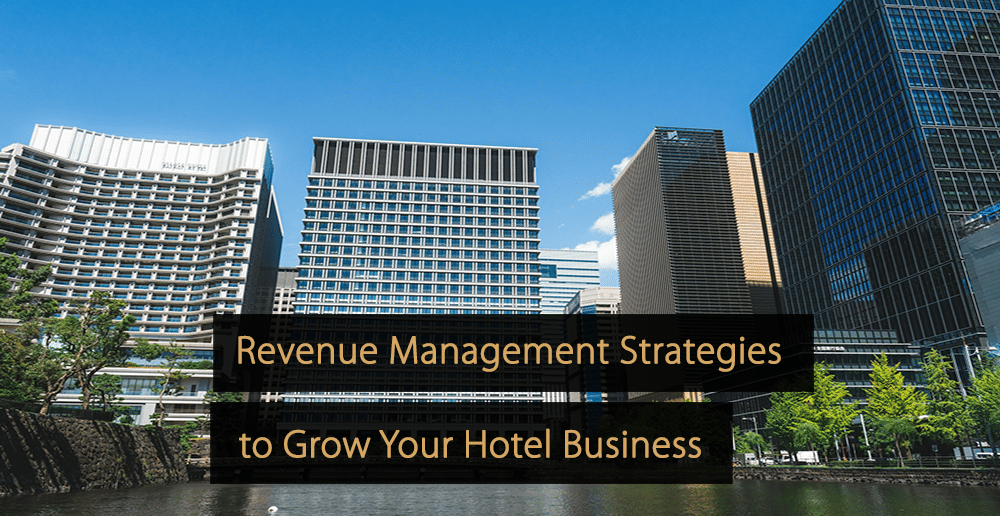

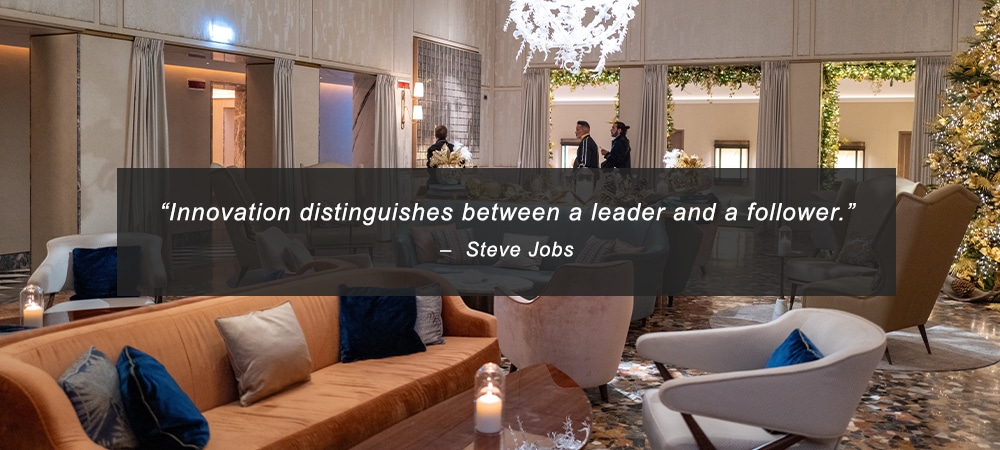


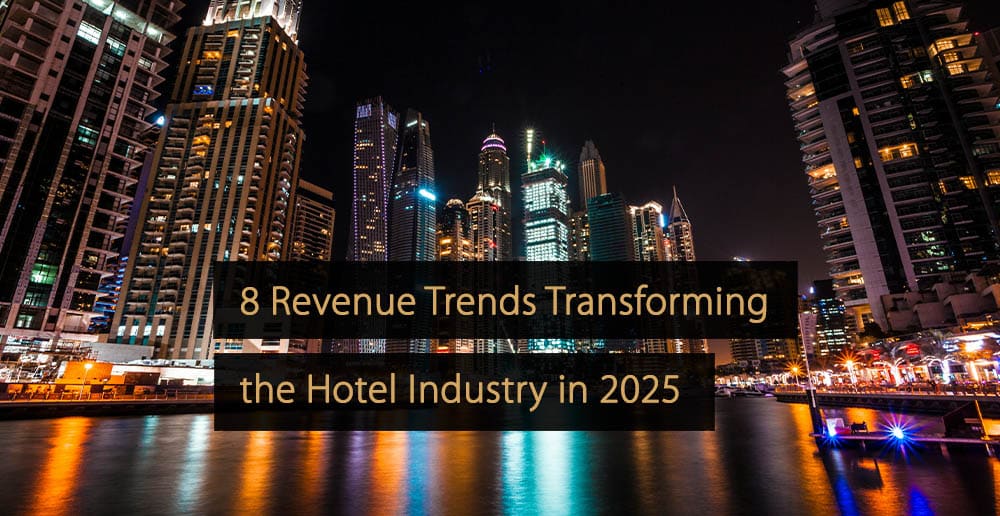
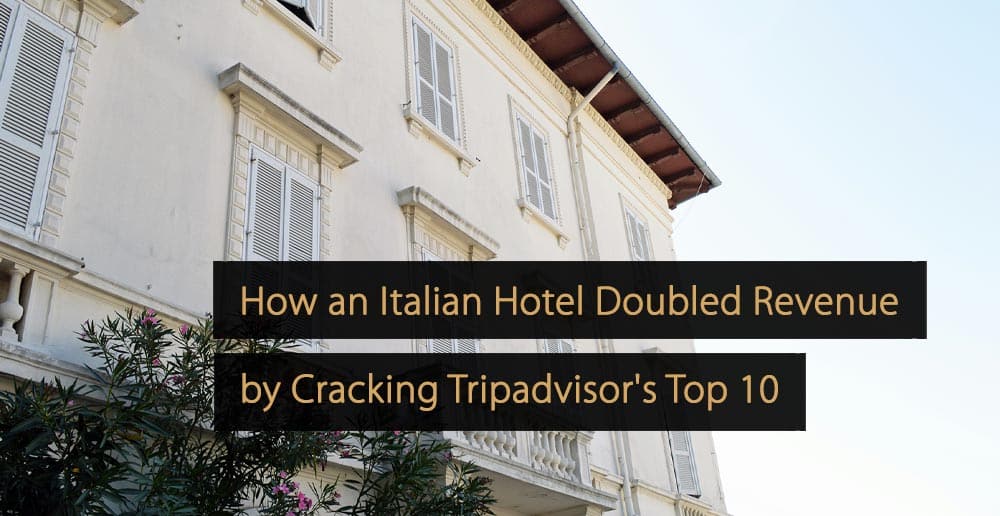
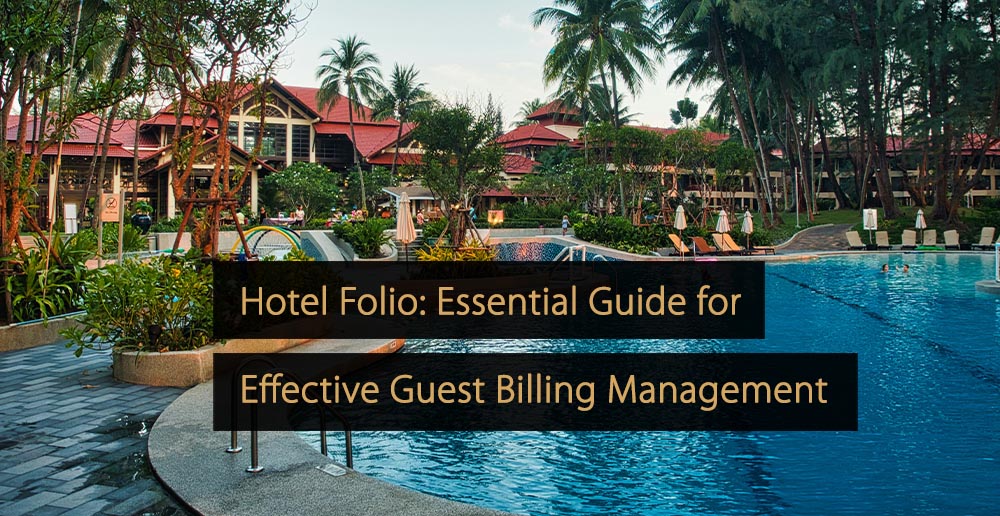

Ótimo artigo! Você disse certo, criar a cultura de receita certa dentro do hotel é a chave para o sucesso na gestão de receita. Este é o fim do “geek” do gerente de receita atrás da tela de seu computador e deve estar em campo conversando com membros da equipe e outros departamentos. Continue assim, pessoal!
Artigo muito bom
Estou impressionado com as informações que obtive aqui. Isso vai me ajudar muito na minha carreira de gerente de hotel.
É realmente um artigo instigante! As estratégias devem ser fixadas para gerenciamento de negócios sem complicações. Incentivos para reserva direta são uma boa estratégia. Obrigado por compartilhar !!
Antes de mais nada, seu post é foda! As estratégias de preços permanecem sempre no topo da gestão de receitas, para qualquer negócio, incluindo hotéis.
A maioria dos Hoteleiros sabe disso, mas não sabe como calcular preços relevantes. Eu também aconselharia usar uma ferramenta de comparação de preços.